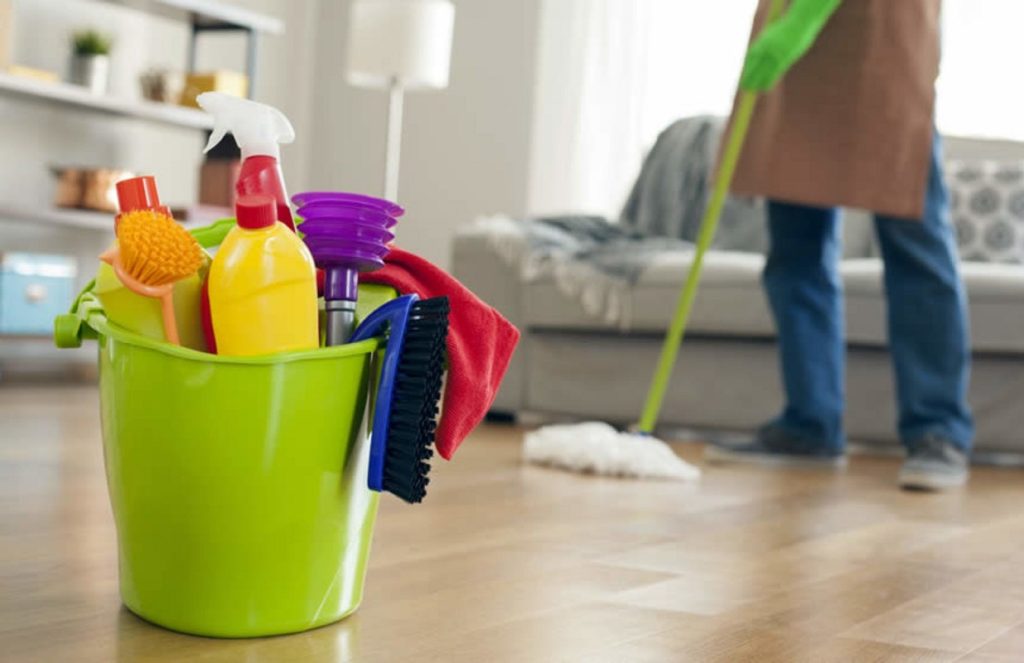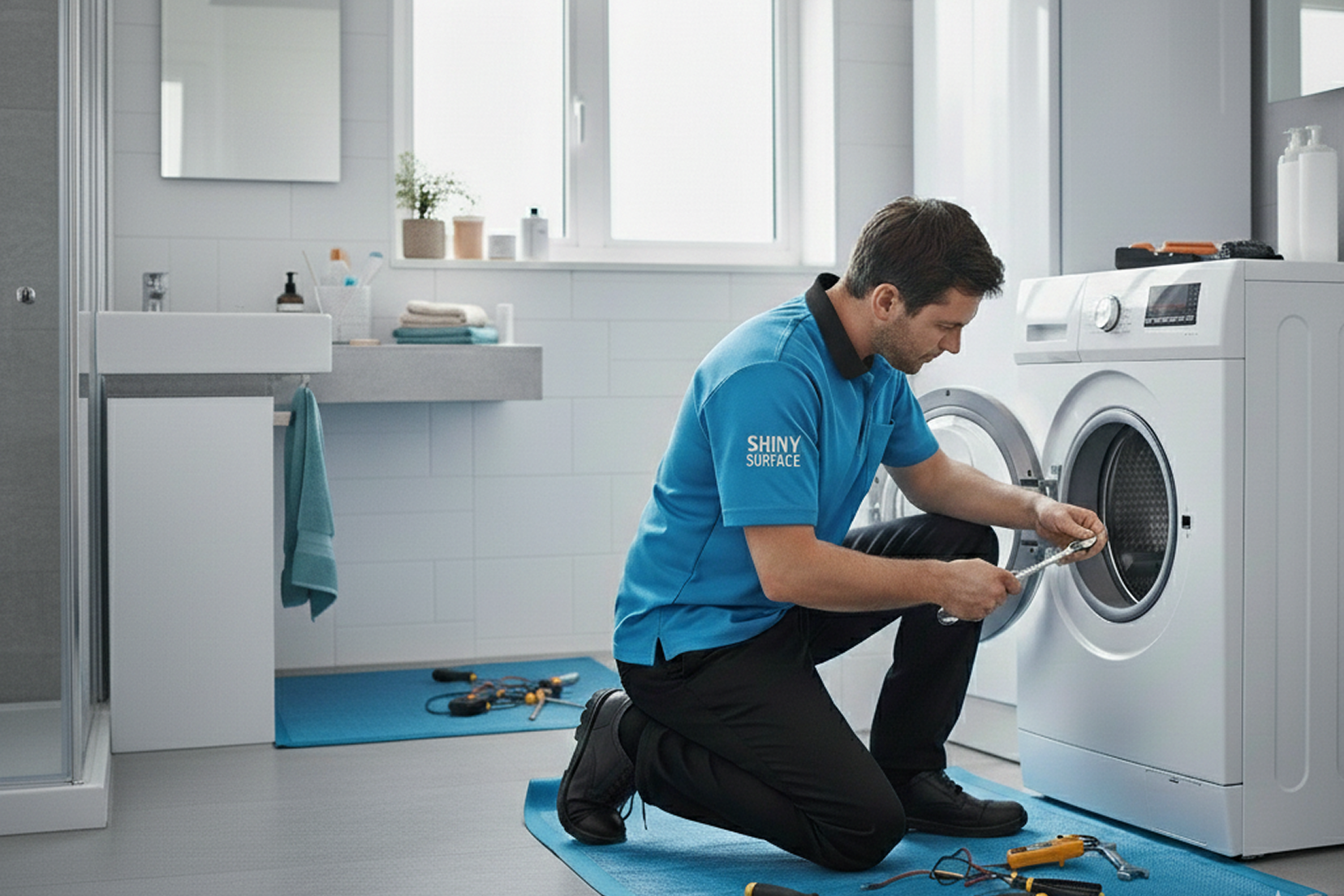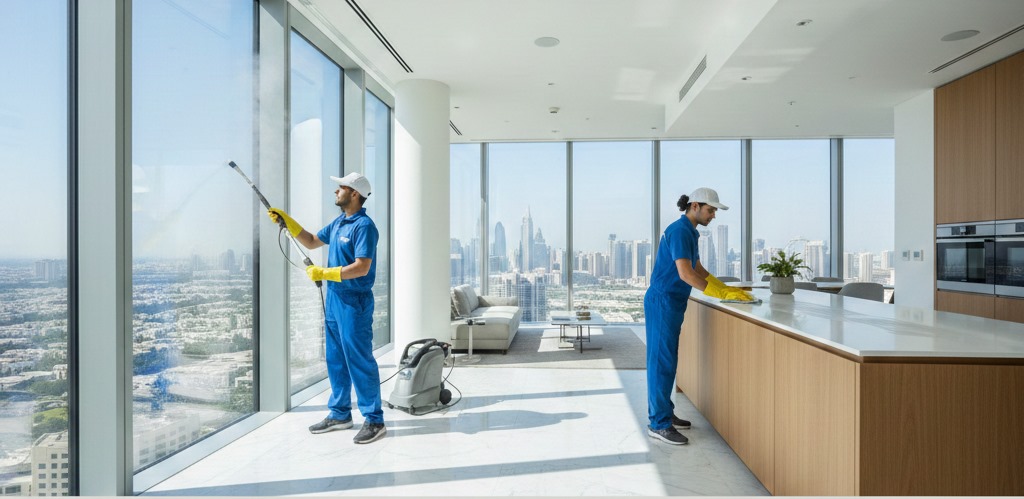Shiny Surface Admin • 02 Dec 2025
In the fast-paced environment of working professionals in the UAE, time is a precious commodity. Between demanding work schedules, long commutes, and personal commitments, finding time to maintain a clean home can feel impossible. However, home deep cleaning services provide a time-saving solution, ensuring that your home remains spotless and healthy without taking up your valuable time.
The Reality of a Busy UAE Workweek
For professionals in the UAE, workdays are often long, with little time left to tackle household chores. The hot, dusty climate exacerbates the situation, causing dirt and grime to accumulate quickly. Whether you're managing a career, socializing, or spending time with family, cleaning frequently falls to the bottom of your to-do list. As a result, the idea of deep cleaning your home on the weekend may feel overwhelming and exhausting.
Deep cleaning is more than just wiping down surfaces—it's a comprehensive process that requires time and effort to address hidden dust, allergens, and areas that often go unnoticed. For busy professionals, the idea of spending their limited free time on these tasks can lead to unnecessary stress and fatigue.
The Hidden Costs of DIY Deep Cleaning
While it may seem cost-effective to handle cleaning yourself, there are hidden costs—both in terms of time and energy—that can make DIY cleaning a less-than-ideal solution:
1. Time-Consuming
Deep cleaning requires more than a quick surface wipe—it involves scrubbing, sanitizing, and organizing spaces that don't get attention during regular cleaning. Tasks like cleaning grout lines, scrubbing the oven, and vacuuming upholstery can easily take hours. For busy professionals, these tasks are time-consuming and take away from important activities like relaxation or spending quality time with loved ones.
2. Inconsistent Results
When cleaning is rushed due to a lack of time or energy, corners are often cut. Key areas like behind appliances, window tracks, and baseboards can be missed, allowing dirt and dust to accumulate unnoticed. Professional deep cleaning services ensure that every area of your home is thoroughly cleaned, leaving no hidden dirt behind.
3. Weekend Burnout
Using your weekends to catch up on cleaning means sacrificing precious downtime. This can lead to burnout, making it even harder to face the workweek ahead. Deep cleaning services help you avoid this trap by handling the cleaning while you focus on resting and recharging for the busy days ahead.
The Benefits of Professional Home Deep Cleaning
1. Efficiency and Expertise
Home deep cleaning services bring experienced professionals who understand the best techniques and use high-quality cleaning tools. From HEPA vacuums to eco-friendly cleaning products, professionals are equipped to tackle every part of your home effectively and efficiently, providing fast results without cutting corners.
2. Thorough, Consistent Results
One of the main advantages of hiring professional cleaners is the consistency of the results. They follow a structured cleaning routine that ensures every area of your home, including hard-to-reach spots, is cleaned thoroughly. This means you won’t have to worry about missed spots or having to redo tasks.
3. Healthier Living Environment
Deep cleaning is not only about making your home look better—it’s also about making it healthier. Regular deep cleaning helps eliminate allergens, dust mites, and bacteria, which can improve indoor air quality and contribute to better overall health. This is particularly important in a climate like the UAE, where dust and allergens can build up quickly.
4. Specialized Cleaning Tools and Products
Professional cleaning companies use specialized tools and products that aren't always available to the average homeowner. These tools are designed to tackle stubborn stains, deep grime, and hidden dirt, which can often go unnoticed with regular cleaning. Using the right products also helps protect your surfaces and ensures they last longer.
On-Demand vs. Regular Deep Cleaning Services
1. On-Demand Deep Cleaning
On-demand deep cleaning is perfect for professionals who need a quick and thorough cleaning when life gets hectic. Whether you have a special event coming up or want a reset after a busy week, on-demand services allow you to clean your home without long-term commitment, providing a deep clean exactly when you need it.
2. Regular Deep Cleaning
If you're looking for a more consistent solution, scheduling regular deep cleaning sessions—whether weekly or bi-weekly—can ensure that your home stays in excellent condition all the time. With regular visits, professionals can address any build-up of dust or dirt before it becomes an issue, so your home always feels fresh and clean.
3. Post-Renovation or Move-In/Move-Out Cleaning
Special deep cleaning services are also available for specific needs such as post-renovation cleaning or move-in/move-out cleaning. These services focus on removing construction dust, cleaning deep within cabinets, and ensuring your new space is free from any residual dirt or debris.
How to Choose the Right Deep Cleaning Service in the UAE
When looking for a professional home deep cleaning service, it’s important to find a provider that meets your specific needs:
1. Look for Proven Experience
Choose a cleaning service with a strong reputation and experience handling homes of all sizes. Check reviews, ask for referrals, and make sure they specialize in deep cleaning tasks, including those hard-to-reach spots that are often neglected.
2. Check for a Systematic Cleaning Approach
A good cleaning service follows a detailed, systematic cleaning plan that ensures every area of your home is thoroughly cleaned. Make sure they cover the areas you need most, such as kitchens, bathrooms, and other high-traffic zones.
3. Inquire About Eco-Friendly Options
If sustainability is important to you, inquire about the availability of eco-friendly cleaning products. Many cleaning companies now offer green cleaning options that are both safe for your home and the environment.
4. Get Transparent Pricing
Ensure that you understand the pricing structure, whether it’s hourly or flat-rate. Clear communication about what is included in the service will help you avoid any surprises when the job is done.
The ROI of Professional Home Deep Cleaning
While professional home deep cleaning services may seem like an additional expense, they provide a significant return on investment. By saving you hours of cleaning time, these services allow you to focus on more important tasks, such as your career, family, or self-care.
Moreover, deep cleaning can prolong the life of your furniture, appliances, and home surfaces. Regular cleaning also improves air quality and helps prevent the build-up of harmful allergens, contributing to a healthier home environment.
A Sample Deep Cleaning Schedule
Here’s what a typical home deep cleaning plan might include:
Kitchen: Cleaning countertops, sink, appliance exteriors, backsplashes, and inside the microwave.
Bathrooms: Scrubbing showers, tubs, toilets, sinks, and polishing mirrors.
Living Areas/Bedrooms: Dusting high and low, vacuuming carpets, mopping floors, and changing linens (if provided).
Rotational Deep-Cleaning (every 2-4 visits): Deep cleaning of fridge interiors, oven, window tracks, and AC vents.
With regular deep cleaning services, your home stays fresh and well-maintained without you having to dedicate hours of your precious time.
Conclusion
Hiring professional home deep cleaning services allows you to reclaim your time and enjoy a clean, organized living space without the stress of DIY cleaning. Whether you need a one-time deep clean or regular cleaning sessions, professionals can keep your home spotless, improve your health, and ensure your weekend stays free for relaxation. It’s an investment in your well-being and your peace of mind.
Deep Cleaning




